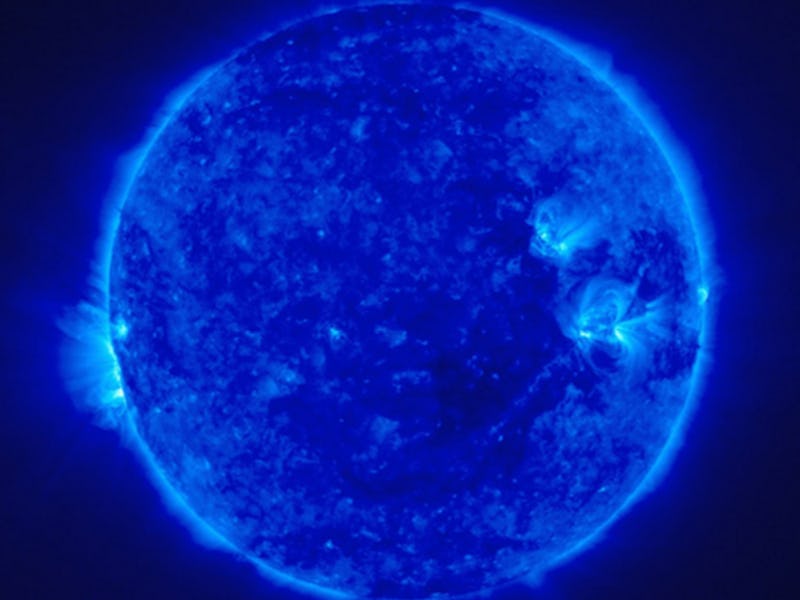Cold Fusion Is News Again, but the Search for the Energy Holy Grail Ain't Over
The often-ostracised research is getting a resurgence of attention.

Cold fusion has historically received more attention from screenwriters than journalists. Recently, though, the media has started getting into the game. There are the breathless (for Scandinavia anyway) stories about the new research coming out of Norway. There is the pretty epic thinkpiece in Aeon. There is the reaction to that thinkpiece in Popular Mechanics. And there is just a ton of easily dismissed nonsense out of India. The stories all make internal sense, but the broader narrative is hard to follow. What do we talk about when we talk about cold fusion?
The first thing to understand is that cold fusion is more than a MacGuffin; it’s a controversial scientific area of study. Simply put, cold fusion refers to the ability to reproduce nuclear reactions that normally occur in extremely hot places — for instance, the sun — at lukewarm, earthly temperatures. In theory, cold fusion could provide endless amounts of clean electricity, liberating us from our dependence on other, smog-creating and Penguin-coating sources. But theory and reality are two different things. Though some scientists say cold fusion has been possible since Martin Fleischmann and Stanley Pons demonstrated it with palladium deuteride in 1989, most claim that the demonstration wasn’t scaleable and that a truly functional system has never been created. Many scientists are plainly contemptuous of the idea.
Even among the core group of palladium deuteride enthusiasts, there are plenty of skeptics who don’t believe in the technologies long term relevance. These people argue that pursuing a holy grail of clean energy is foolish. The abbreviated version of that argument goes like this: Palladium deuteride doesn’t produce energy at a high enough rate and is thus only good for laboratory experiments.
The conversation really only gets interesting when nickel hydrogen shows up. Nickel hydrogen, the thinking goes, could produce energy at a significantly higher rate. But there is no scientific consensus that this is possible. The only man on the planet totally sure that this can be done is Andrea Rossi, an Italian scientist who claims to have managed the trick.
“This big question is, ‘Can you trust him?” says Edmund Storms, a nuclear chemist with a background in radiochemistry and nuclear physics. “His claims are not based upon good science, and many attempts to replicate [results he claims to have achieved] have failed, so we’re in a sort of awkward position on the path toward possible application. But the basic phenomenon is, I think, well-supported with palladium deuteride.” Rossi could not be reached for this article.
Storms, who has authored several books on cold fusion, explains that Rossi is a big part of why cold fusion (many scientists find low-energy nuclear reactions, LENR, a more credible term) is getting some attention again. There is a “for better or worse” caveat.
The interest in the field is starting to percolate into the mainstream, but it’s still a hard nut to crack,” says Storms. “When people have success in this field, they tend to keep it secret because that’s their intellectual property and they want to patent it. So you only hear about the failure. In my case, I publish everything I discover because i think it’s too soon to try to use any of this commercially.”
Storms adds that most journals don’t want to publish articles on cold fusion for fear of looking foolish. The main exception is the Journal of Condensed Matter Nuclear Science, but that’s not considered “conventional.” Storms believes many scientists, fearing for their reputations, are simply refusing to consider cold fusion because it’s an inconvenient possibility, if not a very convenient truth.
Jean-Paul Biberian, author of Fusion in All Its Forms: Cold Fusion, ITER, Alchemy, Biological Transmutations, basically agrees with storms, adding that having worked in the field since 1993 he remains unsold on Rossi’s claims.
“We have no idea,” Biberian says of Rossi’s work. “He just talks and we have no solid data. Rossi started in 2011, so five years later we’re still in the same mystery. Other people are trying to follow in the tracks of Rossi but haven’t been able to reproduce [the results he claims to have achieved]. No one can duplicate what he says.”
When pressed about whether or not he believes in Rossi’s work, Biberian laughed. “This is the most difficult question.” Rossi has said that after a month of analysis the state of his nickel powder has been altered, shifting from natural nickel isotopes - 58, 60, 61, and 64 - to almost entirely Ni-62. He claims a similar result with lithium. “If this is true, then [a nuclear phenomenon] must have happened, unless he’s a magician.” Then again, his results could simply be fraudulent, as many believe they must be.
Like Storms, Biberian stressed that palladium deuteride cold fusion has been proven again and again, but that nickel hydrogen cold fusion — the one with commercial potential — remains a question mark. On the plus side, he says that “palladium deuteride” results are improving. Unfortunately, the people conducting that research are scientists more than engineers, and thus not particularly concerned with practical applications. It’s the practical application, after all, that has made cold fusion the bogeyman of the science world.
“There’s promising work in Japan with nanoparticles now,” Biberian adds. “With palladium, nickel, and copper, and they’re getting good results, so maybe the future is more in the alloys than in the pure metals.” Biberian believes we will one day see cold fusion on an industrial level, but that we don’t understand it well enough yet to predict when that could be.
Most scientists still shun the idea of cold fusion, palladium- and nickel-based alike. The recent research from Norway might help to change that, but it’s almost guaranteed to be a slow process.
“Everyone’s been taught it’s impossible,” Storms says. In a sense, that’s where the conversation begins and ends.